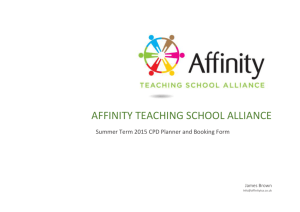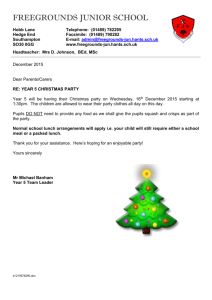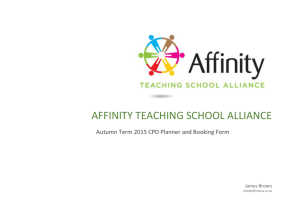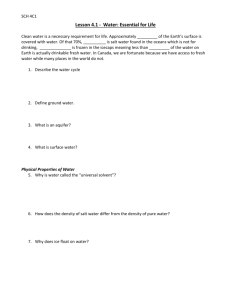here
advertisement
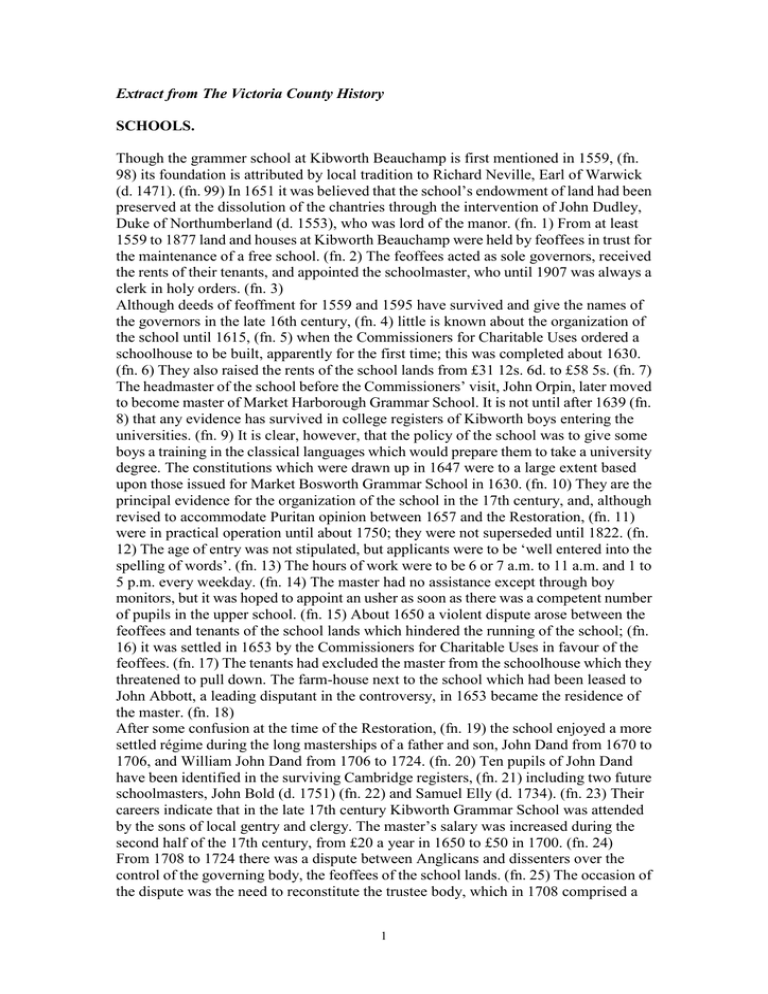
Extract from The Victoria County History SCHOOLS. Though the grammer school at Kibworth Beauchamp is first mentioned in 1559, (fn. 98) its foundation is attributed by local tradition to Richard Neville, Earl of Warwick (d. 1471). (fn. 99) In 1651 it was believed that the school’s endowment of land had been preserved at the dissolution of the chantries through the intervention of John Dudley, Duke of Northumberland (d. 1553), who was lord of the manor. (fn. 1) From at least 1559 to 1877 land and houses at Kibworth Beauchamp were held by feoffees in trust for the maintenance of a free school. (fn. 2) The feoffees acted as sole governors, received the rents of their tenants, and appointed the schoolmaster, who until 1907 was always a clerk in holy orders. (fn. 3) Although deeds of feoffment for 1559 and 1595 have survived and give the names of the governors in the late 16th century, (fn. 4) little is known about the organization of the school until 1615, (fn. 5) when the Commissioners for Charitable Uses ordered a schoolhouse to be built, apparently for the first time; this was completed about 1630. (fn. 6) They also raised the rents of the school lands from £31 12s. 6d. to £58 5s. (fn. 7) The headmaster of the school before the Commissioners’ visit, John Orpin, later moved to become master of Market Harborough Grammar School. It is not until after 1639 (fn. 8) that any evidence has survived in college registers of Kibworth boys entering the universities. (fn. 9) It is clear, however, that the policy of the school was to give some boys a training in the classical languages which would prepare them to take a university degree. The constitutions which were drawn up in 1647 were to a large extent based upon those issued for Market Bosworth Grammar School in 1630. (fn. 10) They are the principal evidence for the organization of the school in the 17th century, and, although revised to accommodate Puritan opinion between 1657 and the Restoration, (fn. 11) were in practical operation until about 1750; they were not superseded until 1822. (fn. 12) The age of entry was not stipulated, but applicants were to be ‘well entered into the spelling of words’. (fn. 13) The hours of work were to be 6 or 7 a.m. to 11 a.m. and 1 to 5 p.m. every weekday. (fn. 14) The master had no assistance except through boy monitors, but it was hoped to appoint an usher as soon as there was a competent number of pupils in the upper school. (fn. 15) About 1650 a violent dispute arose between the feoffees and tenants of the school lands which hindered the running of the school; (fn. 16) it was settled in 1653 by the Commissioners for Charitable Uses in favour of the feoffees. (fn. 17) The tenants had excluded the master from the schoolhouse which they threatened to pull down. The farm-house next to the school which had been leased to John Abbott, a leading disputant in the controversy, in 1653 became the residence of the master. (fn. 18) After some confusion at the time of the Restoration, (fn. 19) the school enjoyed a more settled régime during the long masterships of a father and son, John Dand from 1670 to 1706, and William John Dand from 1706 to 1724. (fn. 20) Ten pupils of John Dand have been identified in the surviving Cambridge registers, (fn. 21) including two future schoolmasters, John Bold (d. 1751) (fn. 22) and Samuel Elly (d. 1734). (fn. 23) Their careers indicate that in the late 17th century Kibworth Grammar School was attended by the sons of local gentry and clergy. The master’s salary was increased during the second half of the 17th century, from £20 a year in 1650 to £50 in 1700. (fn. 24) From 1708 to 1724 there was a dispute between Anglicans and dissenters over the control of the governing body, the feoffees of the school lands. (fn. 25) The occasion of the dispute was the need to reconstitute the trustee body, which in 1708 comprised a 1 majority of dissenters, the survivors of an appointment of 1675. An arbitration of 1718 (fn. 26) resulted in the appointment of an Anglican majority, and in 1724 an attempt by the dissenting minority to secure the vacant mastership for their nominee was defeated. (fn. 27) One of the arbitrators in 1718, Francis Edwards, was chiefly responsible in 1725 for the building of a new schoolroom and house for the master which still stand. (fn. 28) During the 18th century the school ceased to provide instruction in the classical languages. It is difficult to account for this decline, which took place during the mastership of William Cox, 1724- 1758. Its extent is illustrated by the decision of the feoffees on the death of Cox in 1758 to appoint besides the master an usher who would confine his teaching to reading, writing, and arithmetic. (fn. 29) The new master, Joseph Wilson, (fn. 30) who although Rector of Arnesby and Vicar of Foxton lived at Kibworth, may have left a considerable amount of the teaching to his usher. He remained master until his death in 1803. William Buzzard, the usher about 1800, who received £50 a year for teaching the elements, remained with the school until 1848 through the changes introduced in 1822 and 1836. (fn. 31) In 1822 at the instigation of one of the feoffees, Joseph Cradock (d. 1826) of Gumley, (fn. 32) a Chancery decree (fn. 33) was secured which appointed 15 new feoffees and, in a new list of rules which replaced the constitutions of 1647, ordered that the master should teach Latin to those children whose parents required it. In 1828 the governors resolved that no boy should be admitted to the school before the age of seven. (fn. 34) On the death of Wilson’s successor, Jeremiah Goodman, in 1836, the governors decided that in order to promote a return to the study of Latin they would admit fee-payers to the school. (fn. 35) A partition was built across the school-house to divide the upper and lower schools. (fn. 36) In the lower school the usher taught elementary subjects but no Latin; in the upper school the master taught the classical languages. (fn. 37) It was necessary to pass an examination in Latin to enter the upper school. Although the sons of the inhabitants were still entitled to free education in the upper school, they could not in the lower school acquire free of charge the necessary knowledge for entry. The upper school was therefore largely composed of fee-payers who paid £12 a year, and the master at his own cost extended his house for the accommodation of boarders. In 1837 there were 45 pupils. Numbers fell to 22 in 1850, but by 1859 had risen again to 68. The first total to distinguish between fee-payers and others, in 1862, gave 59 pupils of which 24 paid fees. (fn. 38) The master appointed in 1836, J. B. Hildebrand, (fn. 39) who remained with the school until 1870, regarded the construction of the railway through Kibworth in 1857 as a hindrance to the running of the school, not only because the line crossed the bottom of the school paddock, but also because it provided transport for fee-payers to distant boarding schools. (fn. 40) He accepted a decision of the governors that he should himself take charge of the lower school, so that in 1864 only one fee-payer remained in a total of 50 boys, (fn. 41) and the attempt to run a secondary department teaching Latin was abandoned. It appears that because of the governors’ decision, in 1863 the usher resigned taking with him 29 fee-payers and set up a private school. (fn. 42) The school was completely reorganized under a Charity Commissioners’ Scheme of 1877. (fn. 43) The governors were no longer to be the feoffees of the school lands, who were replaced by 10 new governors, 5 representing local government (a magistrate, and 4 chosen by the Boards of Guardians of Billesdon and Market Harborough), and 5 co-opted; the former served for five-year terms and the latter for eight years. Under the new Scheme fee-paying was the rule rather than the exception: an entrance fee was fixed at £2, tuition fees at £6 10s., and boarding fees at not more than £40. The 2 governors were bound to admit some pupils free by means of entrance scholarships to the yearly value of £60, but they did not follow this obligation strictly. (fn. 44) Boys were to be admitted from the age of 8 to 17 and the curriculum included Latin, with Greek as an extra. The first two headmasters to administer this Scheme did not stay long, D. J. J. Barnard (fn. 45) from 1877 to 1884, and F. W. Crick (d. 1924) from 1885 to 1888. (fn. 46) The former took with him most of the boarders when he moved to become headmaster of Stamford School. A. P. Dawson (d. 1930), who remained headmaster from 1888 until 1906, (fn. 47) enjoyed the benefit of new boarding facilities provided in 1888, (fn. 48) but this new arrangement did not attract as many pupils as the previous introduction of fee-paying in 1836. The total of pupils, both boarders and day-boys, rose from 23 in 1880 to 33 by 1884, (fn. 49) and 40 by 1896. (fn. 50) The governors were hampered by the decreasing income from the school lands-£342 in 1885, £272 in 1897, and £236 in 1904 (fn. 51) -and accepted a measure of financial assistance. The technical education committee of the county council in 1892 made its first grant to the school, which involved the appointment of three of its representatives to the governing body. (fn. 52) The Science and Art Department of the Board of Education began making grants to the school in 1900. (fn. 53) In 1906 the Leicestershire Education Committee decided to include the school in the group for which it was to be completely responsible, (fn. 54) and the transfer had been completed by 1909. (fn. 55) The L.E.A. admitted girls to the school for the first time. (fn. 56) The first lay headmaster, C. L. Ryley, who was appointed in 1907 when the school contained 40 children, was able to increase the attendance to 60 in 1914, 75 in 1918, and 80 in 1920. (fn. 57) The staff in 1914 consisted of the headmaster and 2 assistants, with 2 part-time teachers for woodwork and art. The L.E.A. raised the fees from £4 4s. to £6 13s. 4d. in 1920, and to £10 in 1922. (fn. 58) After 1920 the number of pupils in the school decreased; in 1927, when Ryley resigned, there were only 37 children. J. E. Elliot, headmaster from 1927 until 1955, achieved a rapid expansion from 62 in 1928 to 145 in 1935, 372 in 1944, and 525 in 1957. (fn. 59) He introduced prefects and the house system, and reintroduced boarders. A former headmaster, Jeremiah Goodman (d. 1836), bequeathed £300 in order to found two scholarships for Kibworth boys at the proposed Church Langton College of the Hanbury trustees, or failing this, at Merton College, Oxford. In 1880 a Charity Commissioners’ Scheme allowed the governors to use the money to provide scholarships for boys leaving for ‘places of higher education’. (fn. 60) The school is situated at the north end of School Road. The building of 1725 forms part of an Lshaped block of which the south wing is the master’s house. The schoolroom is a high single-story redbrick building with a parapetted gable at its north end. The east front, which remains intact, has a central doorway in a plain opening, flanked on each side by three very tall sash windows. The master’s house has an early-18th-century doorway with a moulded hood supported on brackets. The two lower stories of the house are original. It was later given a third story and a new south front, probably by J. B. Hildebrand in 1836. There are numerous extensions to the school of various dates in the form of both permanent and temporary structures. In 1833 there were at Kibworth Beauchamp, besides the grammar school, five schools attended by 22 boys and 52 girls. (fn. 61) Four of these were apparently private ones. The fifth was the National school, built in 1812 as an Anglican school, and granted funds by the National Society shortly afterwards. (fn. 62) New school buildings for the National school, capable of accommodating 250 pupils, were erected in 1842 with the aid of a state grant, (fn. 63) and improved in 1855 and 1872. (fn. 64) In 1876 the average attendance was 114, (fn. 65) and in 1910 it was 115. (fn. 66) In 1927 the senior 3 pupils from Smeeton Westerby National School were transferred to Kibworth, (fn. 67) and in 1933 all the remaining pupils at Smeeton Westerby, except infants, were similarly transferred. (fn. 68) In 1937 it was decided that all the senior pupils attending Kibworth Beauchamp National School were to be transferred to Church Langton, (fn. 69) and about the same time the children under five years were transferred to the council infants’ school (see below). In 1952 the National school accepted ‘controlled’ status as a junior school, and in 1957 there were 162 children in attendance. (fn. 70) In 1959 the school was transferred to a new building in Hillcrest Avenue, and the original building was being converted for use as laboratories for the grammar school. (fn. 71) In 1907 the county council built an infants’ school at Kibworth Beauchamp. (fn. 72) The building is a singlestory structure of red brick, with some facings in artificial stone. In 1910 the average attendance was 82, (fn. 73) and in 1957, 98. (fn. 74) Footnotes 98 B. Elliott, Hist. of Kibworth Grammar Sch. (1958) was written largely from documents in Kibworth Sch. chest (see Kibworth Sch. Libr., constitutions (1647) cl. 10 providing for a wooden chest, now replaced by an iron one). These include a feoffment deed of 1559. Mr. Elliott has given assistance in the writing of this section. 99 See Elliott, Kibworth G.S. 9-12; the name of Warwick the Kingmaker as founder used to appear on the school prospectus and in the school magazine. 1 Kibworth Sch. chest, deposition Oct. 1651. For possible pre-Reformation existence see Elliott, Kibworth G.S. 10-11, 13. Robert Mason, a chantry priest, signed several docs. in the sch. chest: Assoc. Archit. Soc. Rep. & Papers, xxi. 307. 2 The number of feoffees varied at first, but was fixed at 15 in 1647 (see Kibworth Sch. Libr., constitutions (1647) cl. 37). 3 Elliott, Kibworth G.S. 82, list of headmasters; the book also contains a list of former pupils, 1886-1957, pp. 86-98. 4 Kibworth Sch. chest, deeds (1559 and 1596); Elliott, Kibworth G.S. 18-19; the feoffees of 1596 included Sir Henry Hastings of Leic. and Sir Henry Hastings of Kirby. 5 Kibworth Sch. chest, decree (6 Oct. 1615) of Commissioners for Charitable Uses. 6 Ibid. deposition, Oct. 1651. 7 Ibid. inquisition of Commissioners, 4 Oct. 1615. 8 Leic. City Mun. Room, 1 D.41/34/1; Alumni Cantab. to 1751, ed. Venn, iv. 473; Elliott, Kibworth G.S. 23. 9 Alumni Cantab. to 1751, i. 139; iv. 454. 10 Kibworth Sch. Libr., constitutions (1647); Kibworth Sch. chest contains a copy of the Mkt. Bosworth constitutions with a note to the feoffees to select ‘so much as will fit this school’; for Bosworth Sch., see S. Hopewell, Bk. of Bosworth Sch. (1950), App. II. 11 Kibworth Sch. chest, constitutions (30 Apr. 1657). 12 J. B. Hildebrand, Kibworth Free Grammar Sch. (priv. print. 1865), 5, the only known previous account of the school before Elliott, Kibworth G.S. (1958); there is a copy in the parish chest. 13 Kibworth Sch. Libr., constitutions (1647), cl. 36. 14 Ibid. cl. 23. 15 Kibworth Sch. chest, copy of Mkt. Bosworth constitutions (1630). 16 Ibid. bill of complaint, 1650; Elliott, Kibworth G.S. 27-29. 17 Kibworth Sch. chest, decree (27 Jan. 1653) of the Commissioners for Charitable Uses; C 93/22/7. 18 Kibworth Sch. chest, indenture (14 Nov. 1653), the feoffees to Jeremy Nelson. 4 19 Elliot, Kibworth G.S. 31. 20 Leic. City Mun. Room, 1 D.1/34/1, 3; Alumni Cantab. to 1751, ii. 6, 7. 21 Alumni Cantab. to 1751, i. 127, 173; ii. 7, 102, 284, 491; iii. 309, 453, 455; iv. 92. 22 D.N.B. 23 M. Claire Cross, The Free Grammar Sch. of Leic. 50. 24 Assoc. Archit. Soc. Rep. & Papers, xxii. 290; Elliott, Kibworth G.S. 32. 25 Elliott, Kibworth G.S. 33-35; cf. C 93/47/6, 8. 26 Kibworth Sch. chest, decretal order (9 July 1722). 27 Ibid. affidavit of Richard Bentley, 17 Nov. 1724. 28 Nichols, Leics. ii. 640, 865; T. Blore, Rutland, 182; Edwards was the son of a former Rector of Kibworth. See plate facing p. 321. 29 Kibworth Sch. chest, letter (23 June 1758). 30 Nichols, Leics. iv. 14; there is definite evidence that Wilson was living at Kibworth 1779-90: Leic. City Mun. Room, 1 D.41/19/3-6. 31 White, Dir. Leics. (1846), 512; P.O. Dir. Leics. (1848), 2546; Hagar, Dir. Leics. (1849), 160. 32 D.N.B.; see p. 118. 33 Hildebrand, Kibworth Free G.S. 5. 34 Ibid. 6. 35 Ibid. 7. 36 Woodford, Hist. of Kibworth, 82. 37 White, Dir. Leics. (1846), 510-11. 38 Elliott, Kibworth G.S. 41, 104. 39 Hildebrand was a Dublin graduate: Alumni Cantab. 1752-1900, ed. Venn, iii. 365. 40 Schools Enquiry Com. [3966-XVI], pp. 50-53, H.C. (1867-8), xxviii (13). 41 Hildebrand, Kibworth Free G.S. 9. 42 Schools Enquiry Com. 50-53. 43 Endowed Schs. Com. Scheme 296 (30 Apr. 1877). 44 Ibid.; Elliott, Kibworth G.S. 53-54. 45 B. L. Deed, Stamford Sch. 61-62. 46 Alumni Cantab. 1752-1900, ii. 178. 47 Ibid. 254. 48 Elliott, Kibworth G.S. 60. 49 L.R.O. DE. 126, Letter Bk. of H. T. Grant (Sec. to the Governors, 1878-1906). 50 Ibid. 51 Ibid. 52 L.R.O. DE.126, letter from Sec. to Tech. Educ. Cttee. 10 May 1895. 53 Rep. of Board of Educ. 1899-1900, Pt. 2 [Cd. 329], p. 96 (1900), xix. 54 L.R.O. DE.126, scheme of grants to grammar schs. 55 Ibid. Board of Educ. scheme 1909. 56 L.R.O. DE.126, Board of Educ. draft scheme 1907. 57 Elliott, Kibworth G.S. 66; Leics. Co. Counc. Educ. Offices, correspondence files nos. 4, 8, 10. 58 Leics. Co. Counc. Educ. Offices, corresp. file no. 11. 59 Ex inf. Mr. L. T. Daw, headmaster, Kibworth G.S. 60 Elliott, Kibworth G.S. 54-57. 61 Educ. Enquiry Abstract, 1835, 488. 62 5th Ann. Rep. Nat. Soc. (1815); and see inscription on existing school building. 63 Rep. of Educ. Cttee. of Counc. 1862 [3007], p. 549, H.C. (1862), xlii; White, Dir. Leics. (1846), 510; (1877), 253. 5 64 65 66 67 68 69 70 71 72 73 74 White, Dir. Leics. (1877), 253. Rep. of Educ. Cttee. of Counc. 1876-7 [C. 1780-I], p. 817, H.C. (1877), xxix. Leics. Co. Counc. Mins. 11 May 1910. See p. 187. See p. 187. Leics. Co. Counc. Mins. 10 Nov. 1937. Ex inf. Co. Educ. Offices. Ex inf. the Revd. D. A. J. Ireland. Leics. Co. Counc. Mins. 8 Nov. 1905. Ibid. 11 May 1910. Ex inf. Co. Educ. Offices. From: ‘Kibworth’, A History of the County of Leicestershire: Volume 5: Gartree Hundred (1964), pp. 167-187. URL: http://www.british-history.ac.uk/report.aspx?compid=22057 Date accessed: 06 April 2011. 6
